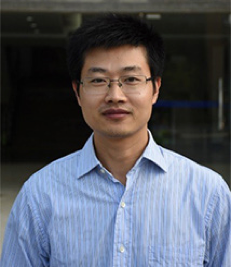Polymer crystallization during injection molding and its on-line investigation
Gan-Ji Zhong*, Jin Yin, Feng-Yang Wu, Jun Lei, Zhong-Ming Li
College of Polymer Science and Engineering, Sichuan University, Chengdu, 610065, China
EXTENDED ABSTRACT: Injection molding is the most commonly used molding method in the polymer industry for its unique combination of high automation, high efficiency, and the ability to mold products with complex shapes and high dimensional accuracy. Currently, there are about 32% of polymer materials are processed into products through injection molding in the world, the polymer used for injection molding over 20 million tons every year in China. The performance of polymer products is highly influenced by the hierarchical structure formed under the coupling of strong shear, pressure, and temperature field during injection molding. In this work, the formation and evolution of polymer aggregation structure and its relationship with properties are studied under the coupling of multiple strong fields during injection molding. Meanwhile, the on-line equipment for injection molding is developed to study the structure formation and evolution during the crystallization of polymer under the multiple strong external fields in the injection molding. The main results are shown as follows: (1) To provide a coupling effect of shear flow, temperature and pressure like injection molding, we design a home-made instrument. This apparatus can impose various shear rates on polymeric melt at one time during experimental, and therefore the experimental efficiency is elevated. The crystallization and orientation have been investigated by using the apparatus, the formation windows of polypropylene (PP), syndyotactic polystyrene and polylactide under pressure-shear-temperature field have been established efficiently, the retarded effect of pressure on the growth PP β-crystallites during injection molding has been revealed; it is observed that lamellar thickening occurs rapidly and a unique spherulites with oriented lamellae form; additionally, one can see that pressure-shear-temperature field induces a rapid crystallization of polycarbonate which is usually amorphous; aforementioned results could provide a more direct guidance for polymer injection molding. (2) The on-line characterization for injection molding is developed, including an injection molding machine, a displacement platform, and a mold with on-line detection windows. The rapid evolution of the multi-scale and multi-layer structure under the strong external field can be studied by combining the equipment with X-ray diffraction technology that processing a millisecond time resolution. The classic topics of polymer physics including crystallization kinetics, polymorphism, lamellar growth and orientation can be investigated systematically during real injection molding using this method. It is found that obviously orientated crystallization with molecular weight-dependency occurs, a growth of PP β-crystallites sensitive to melt temperature is found, and processing time during injection molding can be identified efficiently. Therefore, this research platform could provide a new route to study the quantitative “parameters-structure-properties” relationship. It can also provide a new way to control the structure accurately and then to realize the high performance of injection molded parts.

Prof. Zhong received a Ph.D. in materials processing engineering from Sichuan University. Currently, he is a professor and Ph.D. supervisor at the college of polymer science and engineering, Sichuan University. His primary research interests are the mechanism for the formation of specific microstructure during polymer processing and the relationship between structure and properties of polymer. He has published more than 85 research papers in Macromolecules, Biomacromolecules, Polymer, and so on. He has published 5 patents. He receive various rewards such as the “Outstanding Youth Science Foundation”, “Distinguished Young Scholars of Sichuan Province”, Top Young talent of “Tianfu Ten-thousand Talents Program of Sichuan Province”, and “Second prize in scientific progress of Sichuan Province”.